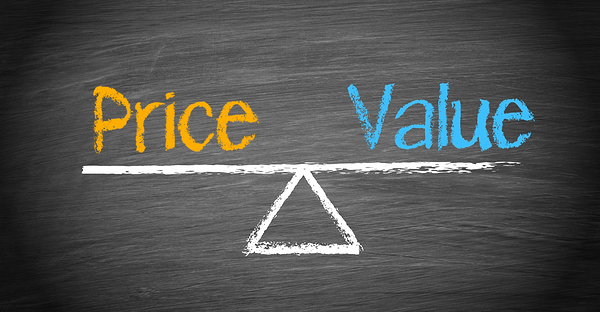Why Value-Based Pricing is Overrated
By Mark Burton
Vice President, Holden Associates
Reposted with permission from http://markrburton.wordpress.com/2011/03/23/why-value-based-pricing-is-overrated/
Whenever we meet with organizations that are eager to reap the benefits of adopting more sophisticated pricing approaches, we always ask executives what they want to accomplish through better pricing. The nature of the answers that we receive ranges from spot-on, to muddled, to being in open conflict with sound business practices. Often there is someone in the organization that either has some good experience with pricing, has been to some conferences or has read one of the many great books on pricing that are out there. Their typical position is that their firm needs to implement “value-based pricing.”
While familiarity with the principles of value-based pricing gives organizations a huge leg up, some significant perspective is required. To help with that perspective, here’s a question to ponder: Over the last ten years what percentage of the revenues and profits of the Fortune 500, Russell 2000 or any other group you choose can be attributed to the adoption of value-based pricing? While I haven’t done the research, as a bit of a pricing insider, I can assure you that answer ranges from negligible to very low.
Don’t get me wrong, organizations that focus on improving pricing performance often see major jumps in both revenues and profits. The question is what is at the root of those results. There are typically three stages that lead to improved pricing results over time.
Stage 1: Cost-plus pricing
The first stage typically involves getting control over unearned discounts and closing loopholes in the full set of terms under which transactions are conducted (a.k.a. the price waterfall.). Since most firms do some form of cost-based pricing, Stage 1 benefits are often a result of becoming better at cost-plus pricing.
Stage 2: Market-based pricing
The second stage is focused on setting list prices that more accurately reflect customers perceptions of value and the alternatives presented by competitors. By tempering the view of what competitors are doing with a sense of the unique value that they offer, firms at this stage are often engaging in what we call disciplined market-based pricing. They look at competitor prices but they also adjust price levels accordingly using data that helps define their value position relative to those competitors. At this stage, that value data doesn’t necessarily have to be overly scientific – it could be based on something as simple as a survey of the sales team regarding the circumstances under which they have or do not have pricing power. It might also come from traditional, attitudinal market research that shows customers preferences or perceptions of one product vs another.
Stage 3: Value-based pricing
This brings us around to Stage 3: full-on value-based pricing. While this should be every firm’s objective, the truth is that implementing a sustainable value-based pricing program is extremely difficult and can take years to become standard practice in the organization. It requires sophisticated knowledge of the economic benefits received by customers; changes in market research, how competitive strategies are conceived, product management, sales practices, and incentive systems at all levels of the organization – just to name a few.
The thing to remember in all of this is that the primary purpose of doing the hard work on pricing is to achieve sustainable, long-run improvements in profitability. Value-based pricing is not a prerequisite for achieving this objective. All it really takes is a commitment to improving on whatever pricing approach that your firm is currently using – whether it is cost-plus, market-based, or value-based.
About The Author
Mark Burton is co-founder of Holden Advisors and a strategic marketing expert for more than 16 years. Mark writes frequently on the challenges that companies face when implementing customer value-centered strategies on his blog and is co-author of the book Pricing with Confidence: 10 Ways to Stop Leaving Money on the Table








